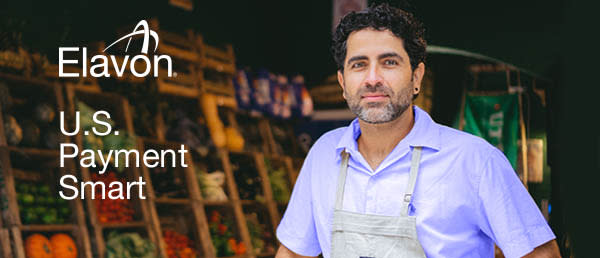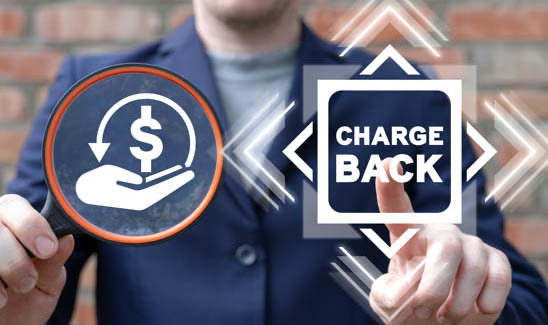 A message from your Customer Account Management team A message from your Customer Account Management team
Chargebacks peak after the holidays, but don’t let them damper your start to the new year. Elavon offers tools, teams and other resources to help you identify invalid chargebacks and file a dispute response. We’ve dedicated our January newsletter to helping you understand these chargebacks, strategize for mitigation and prevent them in the future. We’ll also introduce you to the team dedicated to supporting our customers throughout the lifecycle of a chargeback dispute. Friend or foe? Chargebacks 101  Cardholders and their card issuing bank initiate a chargeback dispute as a way to argue the validity of a card transaction and request reimbursement from the payment recipient. They often do this instead of first trying to resolve their issue with the involved merchant. Cardholders and their card issuing bank initiate a chargeback dispute as a way to argue the validity of a card transaction and request reimbursement from the payment recipient. They often do this instead of first trying to resolve their issue with the involved merchant.
Chargebacks can affect any business that accepts credit or debit card payments. But the more vulnerable businesses often sell luxury goods or services, are subscription based, run eCommerce sites or offer digital products. When a chargeback dispute is valid
Chargeback disputes presented are often valid, such as unauthorized transactions, merchant errors, non-receipt of goods or services, or if a purchased item is not as described or defective. Another valid reason for a chargeback can include unauthorized transactions where the cardholder's payment information was used fraudulently. The process is designed to be a form of cardholder protection within the acceptance and dispute rules established by the involved card brand. Further down in this newsletter, we offer tips that can help detour chargeback disputes. When a chargeback dispute may be fraud-based
Unfortunately, invalid chargebacks are increasingly common. These chargebacks involve a level of fraud ranging from unintentional—such as a customer not recognizing a business’s billing descriptor—to organized theft. Generally, fraudulent chargebacks fall into four categories: friendly fraud, when a customer makes a legitimate purchase but later forgets or claims they didn’t authorize it; return fraud, where a customer alleges a defect that doesn’t exist when returning a product; digital goods fraud, which involve disputes for online courses, software licenses or other digital products; and subscription fraud, where a customer claims a recurring charge was unauthorized or previously canceled. Terms defined
The dispute and response process is known as chargeback representment. It’s a tightly regulated process for fighting an invalid chargeback. Representment involves providing the card issuing bank and the involved card network with evidence that demonstrates a transaction was valid under the card brand rules and that the cardholder's claim should be resolved in favor of the merchant that accepted the original card payment. Representment can help a business prevail on some chargeback losses. Learn more about the process in the next story. If you’re new to chargebacks or confused by some of the language, check out this list of common chargeback terms and definitions.* Who assess chargeback fees?
When a merchant receives a chargeback on a transaction, it is the acquiring bank or credit card network that assesses the chargeback fee. Although Elavon has no control over these fees, we can help support your case if you choose to argue a chargeback claim’s validity (more details on our support featured below). Back to top | 

 A message from your Customer Account Management team
A message from your Customer Account Management team  Cardholders and their card issuing bank initiate a chargeback dispute as a way to argue the validity of a card transaction and request reimbursement from the payment recipient. They often do this instead of first trying to resolve their issue with the involved merchant.
Cardholders and their card issuing bank initiate a chargeback dispute as a way to argue the validity of a card transaction and request reimbursement from the payment recipient. They often do this instead of first trying to resolve their issue with the involved merchant. Unchallenged chargebacks can cost your business money in lost sales and added fees. But with the right strategy, fighting invalid chargebacks can be worth the effort. Here are some guidelines:
Unchallenged chargebacks can cost your business money in lost sales and added fees. But with the right strategy, fighting invalid chargebacks can be worth the effort. Here are some guidelines: The representment process can help a business prevail on some chargeback losses, but preventing fraudulent chargebacks is the goal. Here are some tips:
The representment process can help a business prevail on some chargeback losses, but preventing fraudulent chargebacks is the goal. Here are some tips: Elavon’s global Dispute Resolution team includes 125 professionals dedicated to supporting our customers throughout the lifecycle of a chargeback dispute.
Elavon’s global Dispute Resolution team includes 125 professionals dedicated to supporting our customers throughout the lifecycle of a chargeback dispute.